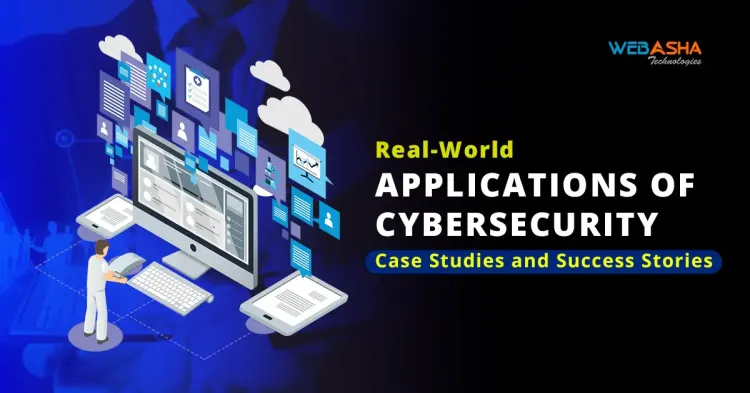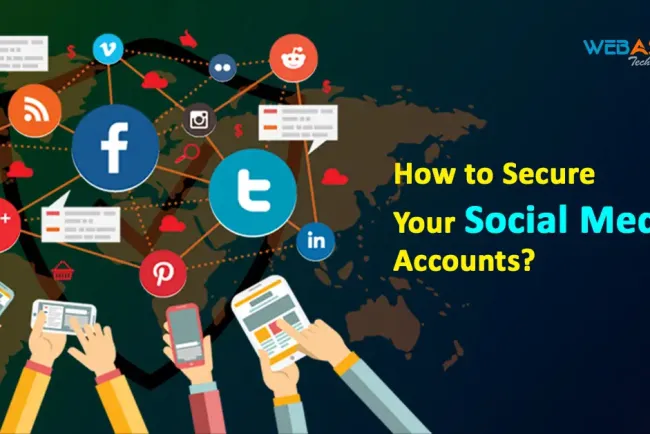Real-World Applications of Cybersecurity: Case Studies and Success Stories
Explore real-world applications of cybersecurity through case studies and success stories. Learn how organizations like the City of Atlanta, Target, Equifax, Cisco, and Netflix have responded to cyber threats and implemented effective security strategies to protect their data and operations.

In a world increasingly driven by digital technologies, cybersecurity has become a cornerstone for protecting sensitive information and maintaining trust in online interactions. Real-world applications of cybersecurity span industries and impact organizations of all sizes. From thwarting sophisticated cyberattacks to implementing proactive security measures, the following case studies and success stories highlight how effective cybersecurity strategies can safeguard data and ensure business continuity.
Case Study 1: The City of Atlanta – Responding to a Ransomware Attack
In March 2018, the City of Atlanta faced a crippling ransomware attack that affected various city services, including police records and court systems. The attackers demanded a ransom of $51,000 in Bitcoin. Rather than paying the ransom, the city focused on recovery efforts by collaborating with cybersecurity firms and government agencies.
Key Takeaways:
- The attack underscored the importance of having robust backup and disaster recovery plans.
- Atlanta invested in strengthening its cybersecurity posture post-attack, including employee training and enhanced monitoring systems.
- This case highlights the critical need for municipalities to prioritize cybersecurity, as public infrastructure increasingly relies on digital systems.
Case Study 2: Target – Lessons from a Massive Data Breach
In 2013, retail giant Target suffered one of the largest data breaches in history, compromising the personal and credit card information of over 40 million customers. The breach originated from a third-party vendor’s stolen credentials, which allowed attackers to infiltrate Target’s network.
Key Takeaways:
- The incident emphasized the importance of vetting third-party vendors and ensuring they adhere to strict cybersecurity standards.
- Target’s response included significant investments in security technologies, such as point-of-sale encryption and tokenization, to prevent future breaches.
- Enhanced cybersecurity awareness training for employees became a focal point to better detect and respond to potential threats.
Case Study 3: Equifax – A Wake-Up Call for Data Protection
In 2017, Equifax, one of the largest credit reporting agencies, experienced a massive data breach that exposed sensitive information of 147 million people. The breach was traced to an unpatched vulnerability in a web application.
Key Takeaways:
- This incident served as a powerful reminder of the critical need for timely software updates and patch management.
- Equifax’s failure to secure its systems resulted in legal repercussions and a significant loss of consumer trust.
- The breach led to a broader industry shift towards more rigorous data protection regulations, including GDPR in Europe and CCPA in California.
Case Study 4: Cisco – Building a Security-First Culture
Cisco, a global leader in networking and cybersecurity solutions, has long emphasized a security-first approach across its products and internal operations. By integrating security into its product development lifecycle and maintaining a dedicated security and trust organization, Cisco has set a standard for cybersecurity excellence.
Key Takeaways:
- Cisco’s proactive stance includes continuous threat intelligence gathering and collaboration with industry partners to stay ahead of emerging threats.
- The company’s commitment to security extends to its workforce, with regular training and a culture that prioritizes data protection.
- Cisco’s success demonstrates how embedding security into the core of an organization’s operations can significantly reduce risk and foster customer confidence.
Case Study 5: Netflix – Leveraging Automation for Security
Netflix, a leading streaming service, has implemented an innovative approach to cybersecurity by leveraging automation and cloud-based security tools. The company developed several open-source security tools, such as Chaos Monkey and Security Monkey, to test the resilience of its cloud infrastructure and identify vulnerabilities.
Key Takeaways:
- Automation allows Netflix to continuously monitor and respond to security threats at scale, ensuring the protection of its massive user base.
- The use of microservices architecture enables Netflix to isolate and contain security incidents, minimizing their impact.
- Netflix’s approach illustrates how adopting advanced technologies and a proactive mindset can effectively safeguard digital assets.
Conclusion
These real-world applications and success stories illustrate the diverse ways in which organizations can strengthen their cybersecurity defenses. From responding to breaches to proactively embedding security into business operations, these examples highlight the importance of a comprehensive and forward-thinking cybersecurity strategy. As cyber threats continue to evolve, the lessons learned from these case studies serve as valuable blueprints for organizations aiming to enhance their security posture and protect their digital assets.
FAQs
1. What can we learn from the City of Atlanta ransomware attack?
The City of Atlanta ransomware attack highlights the importance of having robust backup and disaster recovery plans. It also demonstrates the need for municipalities to invest in strong cybersecurity measures, including employee training and advanced monitoring systems, to prevent and respond to such incidents.
2. How did the Target data breach occur, and what were the consequences?
The Target data breach occurred in 2013 due to stolen credentials from a third-party vendor, which allowed attackers to infiltrate the company’s network. The breach compromised the personal and credit card information of over 40 million customers. In response, Target enhanced its cybersecurity practices by investing in encryption, tokenization, and employee training.
3. What was the main cause of the Equifax data breach?
The Equifax data breach in 2017 was caused by an unpatched vulnerability in a web application. The breach exposed sensitive information of 147 million people and highlighted the critical need for timely software updates and patch management. This incident underscored the importance of proactive cybersecurity measures and led to stricter data protection regulations.
4. How does Cisco maintain its cybersecurity posture?
Cisco maintains a strong cybersecurity posture by embedding security into its product development lifecycle and fostering a security-first culture within the company. This includes continuous threat intelligence gathering, collaboration with industry partners, and regular cybersecurity training for its workforce.
5. What innovative approach does Netflix use for cybersecurity?
Netflix leverages automation and cloud-based security tools to manage its cybersecurity. The company developed open-source tools like Chaos Monkey and Security Monkey to test the resilience of its cloud infrastructure and identify vulnerabilities. Netflix’s approach includes using microservices architecture to isolate and contain security incidents effectively.
6. Why is it important for organizations to study real-world cybersecurity case studies?
Studying real-world cybersecurity case studies helps organizations understand the practical applications of cybersecurity strategies and learn from the successes and mistakes of others. These insights can guide businesses in developing robust security measures, enhancing their response to cyber threats, and improving overall security posture.
7. How can organizations avoid common cybersecurity mistakes highlighted in these case studies?
Organizations can avoid common cybersecurity mistakes by implementing strong access controls, conducting regular software updates, investing in employee training, and continuously monitoring for unusual activity. Learning from past incidents, such as data breaches and ransomware attacks, can also help refine their cybersecurity strategies.












![Top 10 Ethical Hackers in the World [2025]](https://www.webasha.com/blog/uploads/images/202408/image_100x75_66c2f983c207b.webp)

![[2025] Top 100+ VAPT Interview Questions and Answers](https://www.webasha.com/blog/uploads/images/image_100x75_6512b1e4b64f7.jpg)









